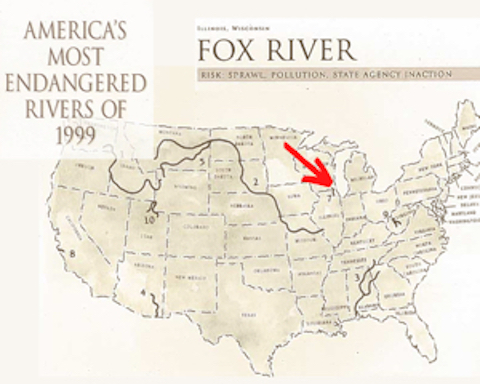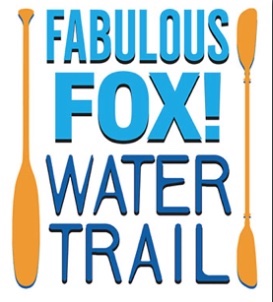The Fox River is healthier than it has been in 100 years. This is due to government intervention in the name of public health and continued federal and state regulation on effluent from private businesses and public wastewater sources.
A major turning point was during the Nixon administration. Wedged between a very unpopular Vietnam War and a strong civil rights movement, an environmental movement emerged producing the Environmental Protection Agency (EPA) and a suite of federal environmental legislation including the Clean Air Act, Clean Water Act (CWA), Resource Recovery Act, and several more similar protection measures. Back then, adherence to new regulations had stringent enforcement and significant funding attached to assist in meeting mandated standards.
Under the CWA, private and municipal polluters received funding to upgrade treatment facilities that resulted in significant improvements to water quality conditions. Simultaneously, funding for research ramped up addressing the easy challenges but new threats emerged. For example, lead as an air pollutant forced the development and mandates related to unleaded gasoline. Then came the early days of climate change awareness and renewable energy opportunities. A change in the United States leadership (Reagan and two Bushes) began to favor capitalism over environmentalism and steady progress took a pause.
The last fifty years have seen a slow yet constant improvement in the Fox River’s water quality and biological health, and it continues to improve. The last 20 years have seen an increase in Fox River research that supports these endeavors. Twenty-three years ago, the Fox River was ranked the 7th most endangered River in America. That designation was primarily a marketing approach that yielded huge benefits and caught the attention of the U.S. EPA which pressured the Illinois EPA to reevaluate the conditions of the Fox River Watershed. The result was the impairment status expanding from two small areas to the entire main stem. That designation warranted a mandated action plan and the Fox River Study Group (FRSG) was born to address the nuisance algae and low dissolved oxygen conditions.
This year the FRSG’s Fox River Implementation Plan was released. It addressed phosphorous, the major problematic nutrient and recommended limits of 1.0 milligrams/liter and a .5mg/l by 2030 for wastewater treatment plants. With a collective investment of $150,000,000, phosphorous levels are rapidly trending lower. However, 64% of the watershed is agricultural use and contributes phosphorous at significant and steady levels. Little progress has been made on this issue.
The next step in restoring the river’s health is dam removal. The 200-year-old dams are now obsolete. Historically, they provided mechanical power and ice production but are now a human safety hazard and significantly contribute to the impairments of nuisance algae and low dissolved oxygen. A 20-year study by the Army Corps of Engineers will conclude soon and is expected to recommend the removal of possibly 10 dams and will support that with a 65% funding assistance for river restoration efforts. The other 35% will come from local sources. Half of the Fox River dams are owned by the Illinois Department of Natural Resource (IDNR) which has designated funds for dam removal, providing a large portion of the local match. Scientifically supported and nearly fully funded, this should be a new chapter in Fox River health. Exciting times!
A plethora of local protection and restoration projects are producing results. McHenry County has completed a 20-year study of collecting surface and groundwater data every 15 minutes to map water flow. Kane County has completed a study that now makes data available to the public that depicts the path of all surface water drainage. Lake County has been leading in stormwater management initiatives, and in Kendall County, several key river front and ecologically sensitive areas have been preserved. Municipalities are aggressively addressing the water quality threats of storm water discharges with a variety of green infrastructure initiatives. Understand that when you look at your water bill, much of that is going to the protection and stewardship of the Fox River.
Additionally, we have the infantry of non-profit organizations and their volunteer warriors. Our only U.S. Fish and Wildlife Refuge, Hackmatack is ten years old and growing its land acquisitions. The Fabulous Fox! Water Trail is just a month away from becoming part of the U.S. National Park Service. County and Township level natural area restoration crews are improving the health of the habitats within their holdings and thousands of volunteer-hours are being invested annually in natural area restoration. Non profits like Wild Ones, Friends of the Fox River, and many others are promoting and planting native species for habitat on a yard size scale.
The population projection for Kane and McHenry County is an increase of 400,000 by 2050. Protecting our watershed from numerous threats such as land development degradation will take public involvement and good planning. One growing threat is the rapidly rising levels of chloride levels in soil and groundwater, primarily from using sodium chloride for snow and ice removal. This is being addressed with education and exploring alternative anti-icing agents. Counties and villages are adopting better practices and now working with private operators. Addressing the issues associated with single-use plastics and other sources of micro plastics is a growing concern.
The current State of the Fox River is stable and steadily improving. This is reflected in the on-going chemical water quality data from the Illinois State Water Survey and the Illinois Department of Natural Resources fish data from the past 30 years. The progress, though slow, is the result of a historical movement and the collaborative efforts on an incredible number of fronts consisting of homeowners, organizations, municipalities, and state and federal agencies. It will take diligence to maintain this trend.
Together, WE keep on fixin’ the Fox.






